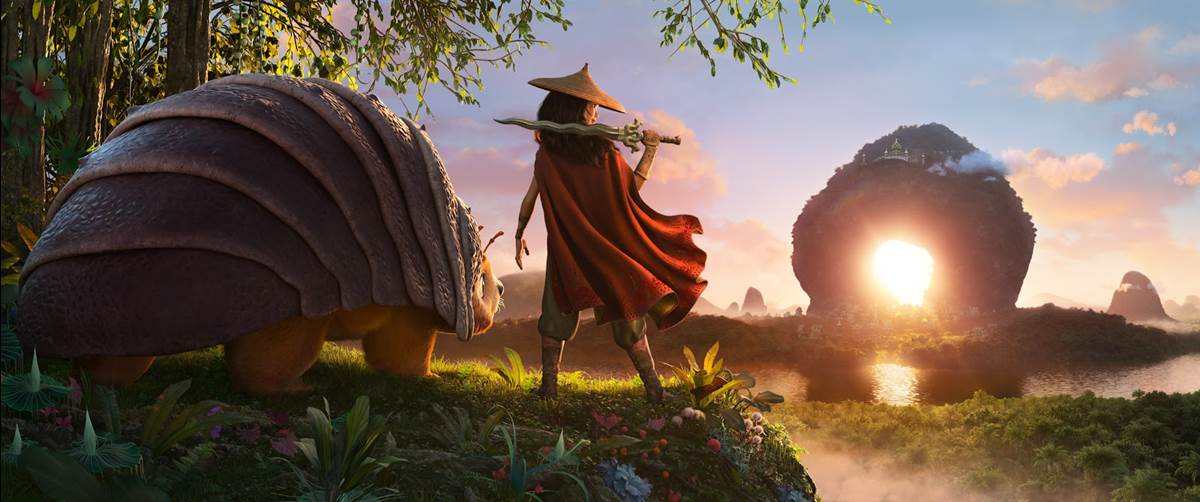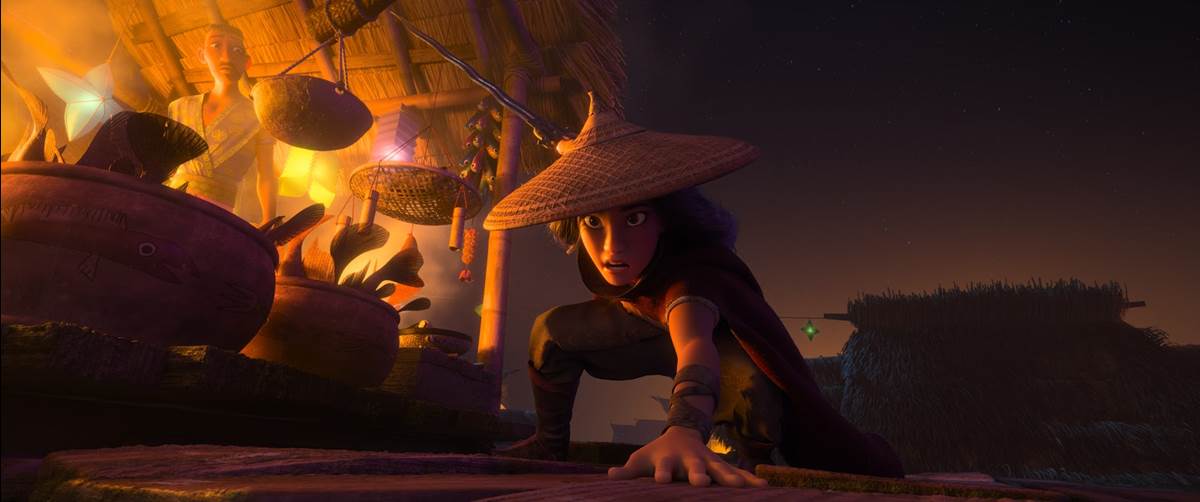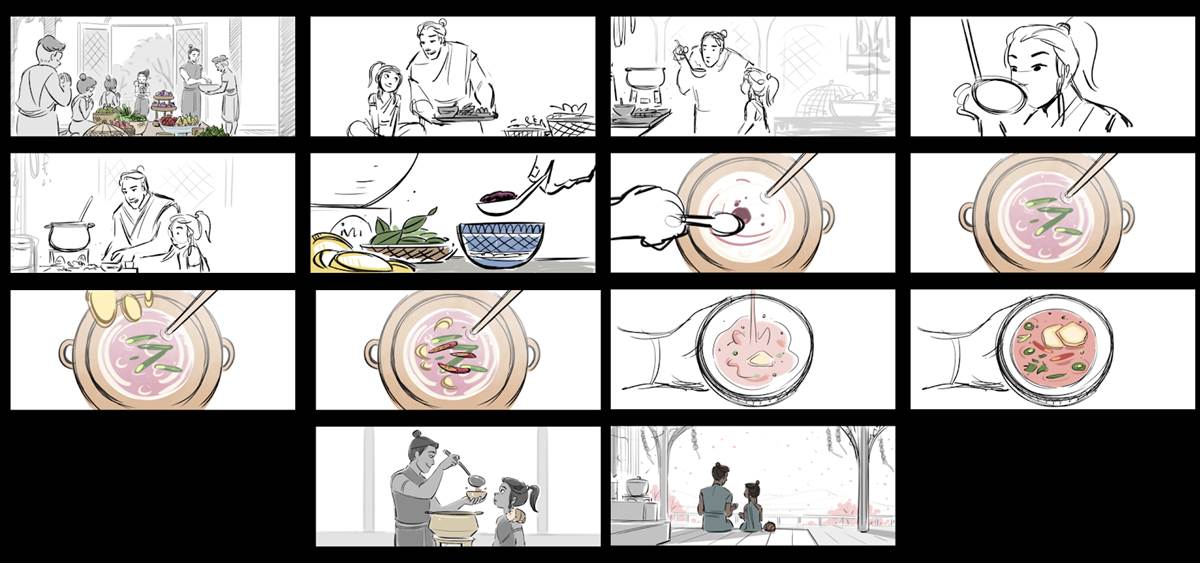Creating Kumandra: How the World from Disney’s “Raya and the Last Dragon” Was Inspired by South Asian Cultures
Raya and the Last Dragon may be the first film from Walt Disney Animation Studios completely animated from the homes of its talented artists, but it also spent years in development like most animated features. I recently had the pleasure of experiencing some of the film, coming to theaters and Disney+ Premier Access on March 5th, and learned more about the project from its filmmakers. This animated adventure will introduce audiences to Kumandra, a magical world inspired by real cultures.
“Even though Kumandra is a fantasy world, we wanted a name that would resonate across multiple cultures in Southeast Asia,” Screenwriter Adele Lim explained about how Raya got her name. “We went through hundreds of names, but I remember there was a moment when the name Raya came up and… I had an emotional response to it. In Malay, it means ‘Celebration’ and evokes this very joyful time together.” Adele Lim recently wrote the screenplay for the worldwide hit comedy Crazy Rich Asians, which also starred Awkwafina, who voices the dragon Sisu.
Head of Story Fawn Veerasunthorn also fondly recalled the day the name Raya was suggested. “In the southern part of Thailand, this name means ‘ The one who leads,’ which I thought was a great name for a lead character and her journey.” Having grown up in Chonburi, Thailand, Fawn also became a member of the South Asia Story Trust, which included fellow artists at Walt Disney Animation Studios of South Asian descent in addition to choreographers, musicians, linguists, architects, cultural experts, martial artists and anthropologists.
Osnat Shurer served as a producer on Moana, finding great success through forming the Oceanic Story Trust that helped to ensure that all aspects of the film were respectfully representing and not appropriating the culture. “We knew from the very beginning that we wanted to take the same approach with inspirations found within the cultures of Southeast Asia,” the producer shared. With her on board for the adventure of Raya and the Last Dragon, research trips were taken to Laos, Indonesia, Thailand, Vietnam, Cambodia, Malaysia, and Singapore.
Members of the South Asia Story Trust made themselves available to the Raya and the Last Dragon team. For example, an Indonesian linguist at UCLA reviewed every character or location name for the film before they were finalized. A textile expert from the Pacific Asia Museum helped the artists make accurate fabrics in the digital world. And Dr. Steve Arounsack, a visual anthropologist, proved to be an invaluable resource with his expertise on the commonalities between Southeast Asian cultures. Through repeated collaborations over the course of making the film, Osnat Shurer shared that many of the members of the film’s story trust have now become friends.
Some of Disney’s best-known animated classics are retellings of ancient fairy tales or fables and while Raya and the Last Dragon is an original story, it incorporates some cultural mythology. Sisu, the last dragon in Kumandra, was inspired by Nāgas, dragons that are associated with bodies of water. There are well-known legends about them that cross South Asian cultures, including the Nāga of Chini Lake. Southeast Asian cultural folklore also has a tradition of female leaders and warriors, like the real-life tales of Tun Fatimah and the Trung Sisters' Rebellion.
Another theme that came from the research trips and the culture trust was that of community. While in Luang Prabang with Dr. Arounsak, Co-Director John Ripa was preparing to give alms to the local monks. When he asked how much to give, he was told about the size of a quarter in the palm of your hand. “To me, that seemed so little,” the Co-Director shared. “But when the monks opened their baskets, they were almost full already. And it really struck me that when each person comes together in a community, it’s very powerful and inspiring. And these qualities enlightened the themes as well as guided us in creating the characters.”
With so much attention to detail in all aspects of the film’s design, there’s a lot that audiences won’t pick up on if they’re not familiar with the cultures that inspired the adventure. Raya’s hat, for example, has a unique shape that was inspired by the stoupas found at temples in Southeast Asia. If you look closely, the details on her hat look like the scales of a dragon. Nearly all of the characters in the film wear some form of variation on a traditional suea pai or suea pat from Cambodia, Laos and Indonesia. The people of Kumandra also have a circular hand gesture, a cultural moment witnessed on research trips to the peninsula of Southeast Asia and parts of Indonesia.
Food is another important element of the culture that found its way into the film. If you’re planning to experience Raya and the Last Dragon at home through Disney+ Premier Access, you might want to get takeout from a local Southeast Asian restaurant if you have one in your town. Some of the dishes featured in the film include Beef Rendang, Tom Yum Goong and Fish Amok. Even the philosophy behind Southeast Asian cuisine, pairing unique flavors that shouldn’t go well together but do, became a visual metaphor for the storytelling approach to Raya and the Last Dragon.
“The culture of Kumandra, the world that we created, wasn’t just in the clothes, the architecture and the food, it was also in the way our characters move,” shared Qui Nguyen, another screenwriter on the film who brought his martial arts background to the project. “At its very core, Raya is an action movie and although it is a fantasy, the one thing we didn’t want to do is make our fights fantastical. There’s no one running on the tops of trees or shooting fireballs. Every punch, kick and block is grounded in real-world physics and the fighting styles are rooted in the judicial real-world styles of martial arts in Southeast Asia.” Diehard martial arts fans may be able to pick out elements of Muay Thai, Pencak Silat and Arnis in the film’s fight sequences.
By the way, the animators weren’t the only ones who had to make the film from home. “It also meant that our cast had to record from their homes,” Director Don Hall revealed. “Oftentimes from their closets, which have the best acoustics in most houses.” For Awkwafina, who was in Australia filming Marvel Studios’ Shang-Chi and the Legend of the Ten Rings, Disney had to set up a pop-up recording studio in the house she was staying at. As a special part of the early-look at the film, more casting announcements were also made. In addition to Kelly Marie Tran as Raya and Awkwafina as Sisu, the film’s voice cast includes Daniel Dae Kim (Chief Benja), Gemma Chan (Namaari), Benedict Wong (Tong), Izaac Wang (Boun), Thalia Tran (Baby Noi) and Walt Disney Animation Studios’ good-luck charm Alan Tudyk as Raya’s faithful sidekick Tuk Tuk.
Raya and the Last Dragon is shaping up to be a much-needed escape for audiences around the world. Inspired by the culture of Southeast Asia, theatergoers and Disney+ subscribers will be able to access the fictional world of Kumandra for an incredible adventure unlike anything you’ve ever seen before.
Raya and the Last Dragon is scheduled for release on March 5th in theaters and on Disney+ though Premier Access.






